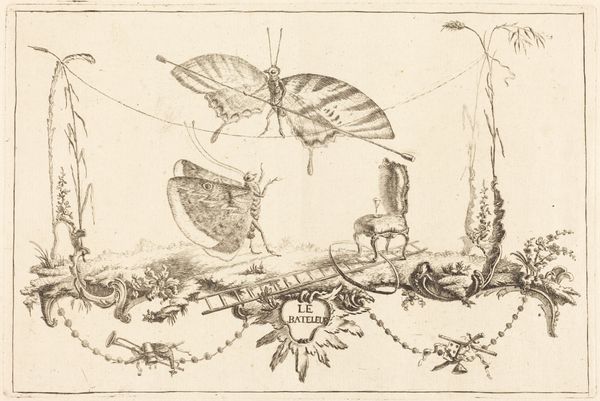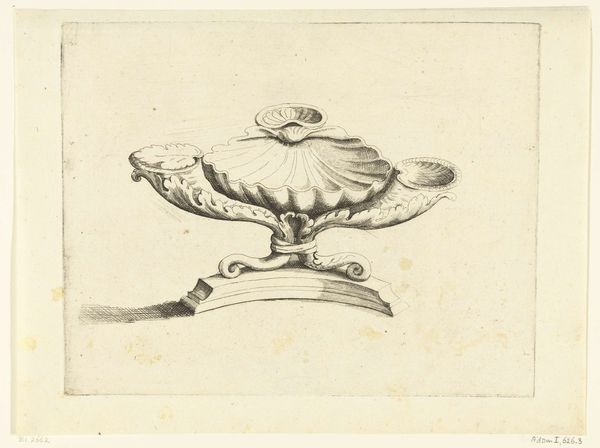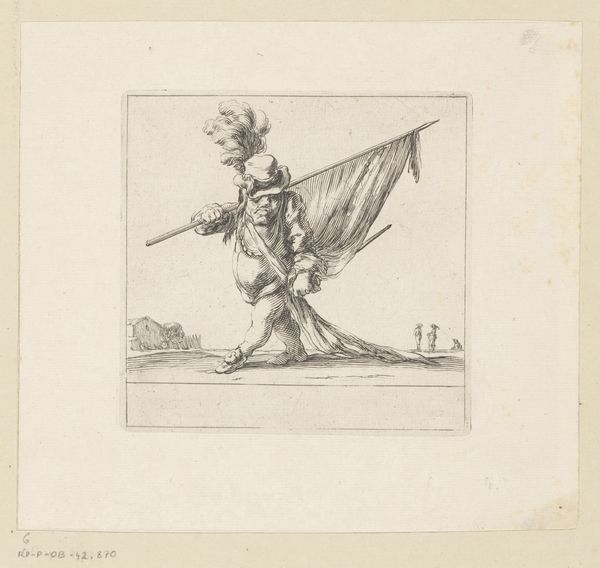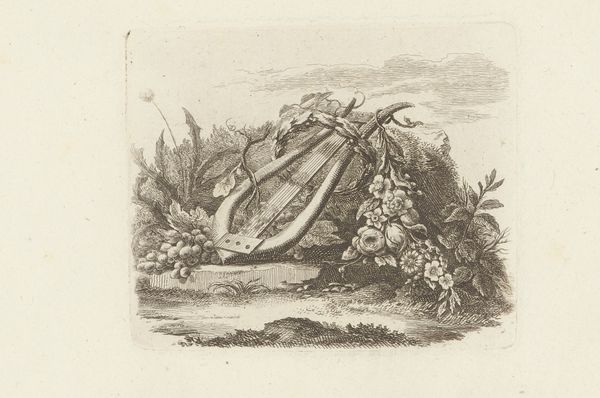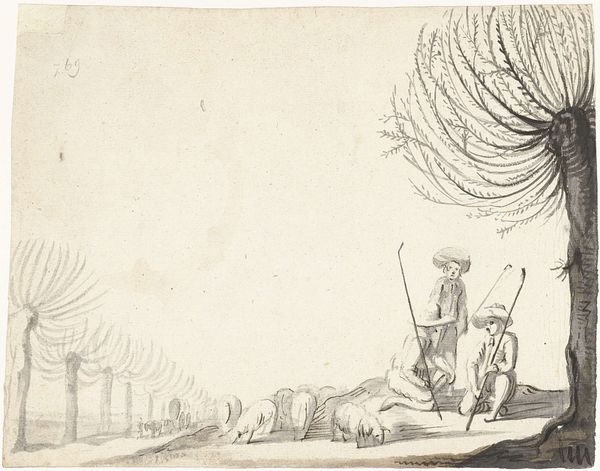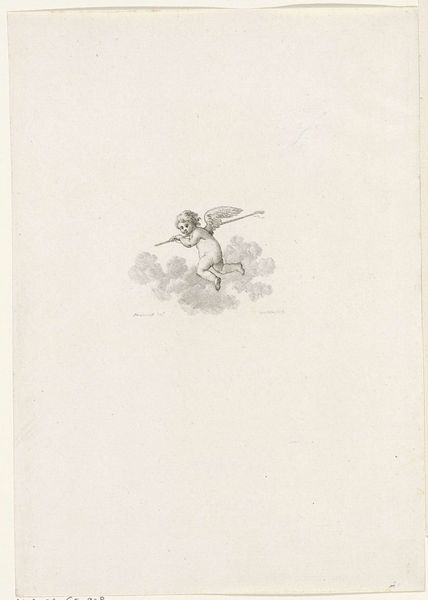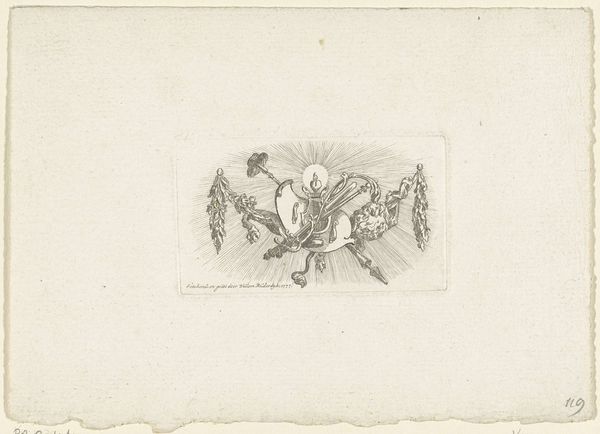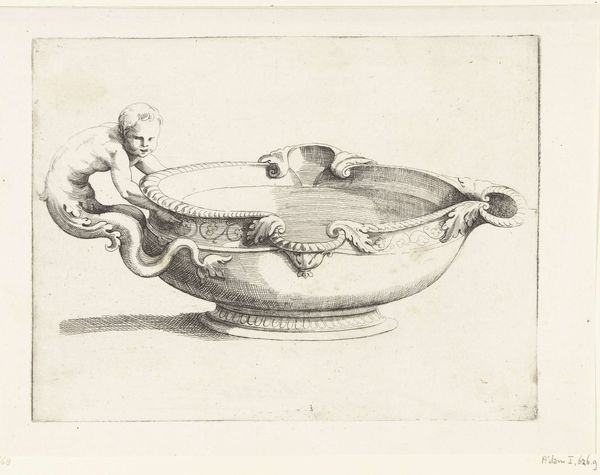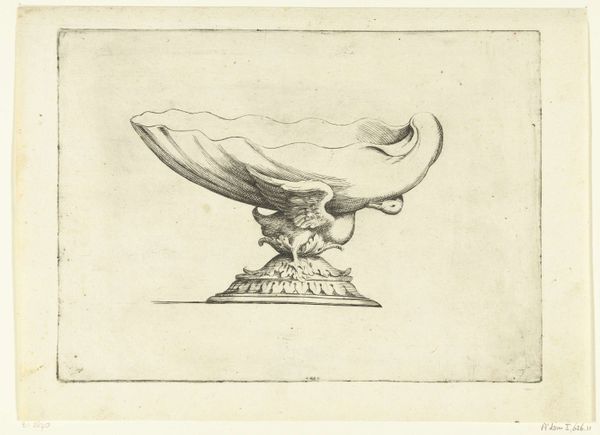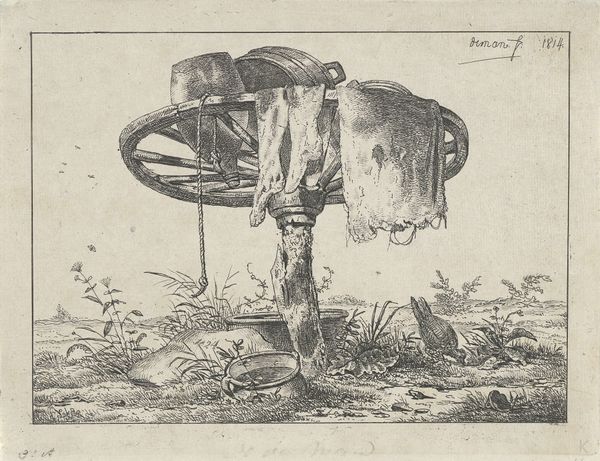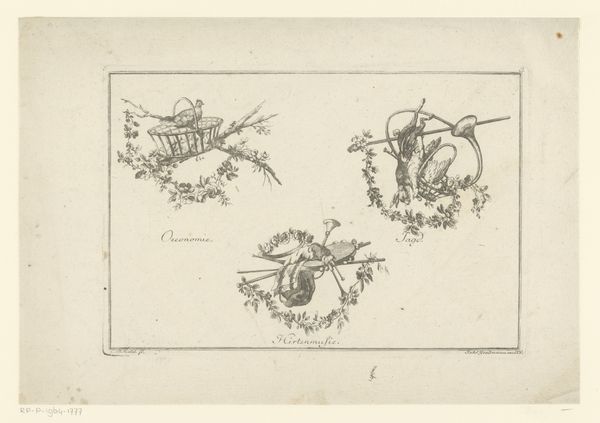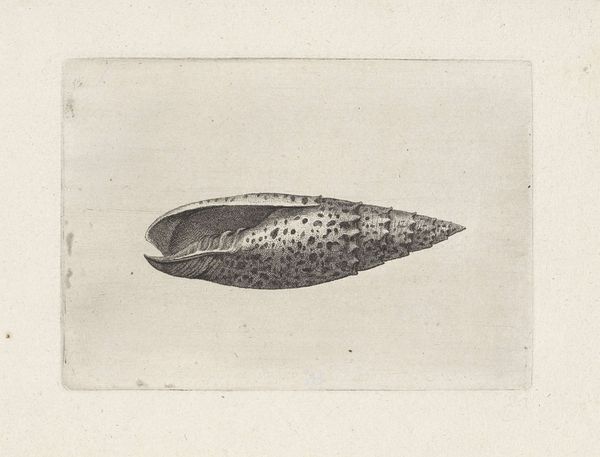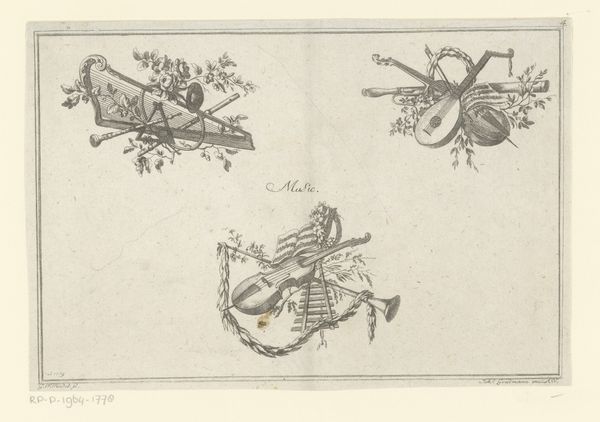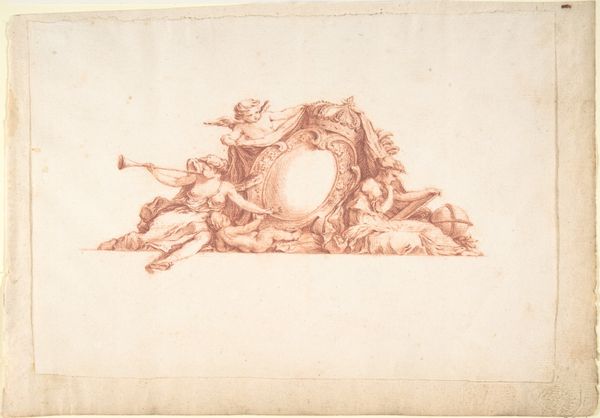
Schaal met deksel in de vorm van een dubbele schelp c. 1614 - 1654
0:00
0:00
hendrikvanderiiborcht
Rijksmuseum
print, metal, engraving
#
baroque
# print
#
metal
#
form
#
line
#
decorative-art
#
engraving
Dimensions: height 159 mm, width 214 mm
Copyright: Rijks Museum: Open Domain
Editor: This is "Schaal met deksel in de vorm van een dubbele schelp," or "Shell with lid in the shape of a double shell" by Hendrik van der Borcht II, created sometime between 1614 and 1654. It’s a print using metal and engraving. It feels delicate despite being metal; the lines create so much depth. How do you interpret this work from a formal perspective? Curator: The primary interest lies in the artist's manipulation of line to simulate three-dimensionality on a two-dimensional surface. Note the variations in line weight, employed strategically to suggest light and shadow, effectively modeling the complex curves of the shell. How does this conscious application of Baroque aesthetics affect your appreciation? Editor: It definitely emphasizes the inherent beauty of the shell, elevating a natural form into a sophisticated, decorative object. The balance between naturalism and artifice is quite striking. Do you think the medium, engraving, plays a crucial role in achieving this effect? Curator: Indubitably. Engraving, with its capacity for precise, controlled lines, facilitates the intricate detailing vital for capturing the nuances of the shell's texture. Moreover, consider the implications of reproducing this object through printmaking. Does that have bearing on understanding the composition, and therefore the piece's formal impact? Editor: It suggests accessibility and the dissemination of artistic taste, implying this design wasn't intended as a unique, precious object but as a model or template. I now have a deeper understanding on the connection between form, function, and meaning within the artwork. Curator: Indeed, the intersection of these elements offers rich insights. Hopefully, exploring the nuances of line, form, and materiality in "Shell with lid in the shape of a double shell," has enriched your understanding of formal analysis.
Comments
No comments
Be the first to comment and join the conversation on the ultimate creative platform.
